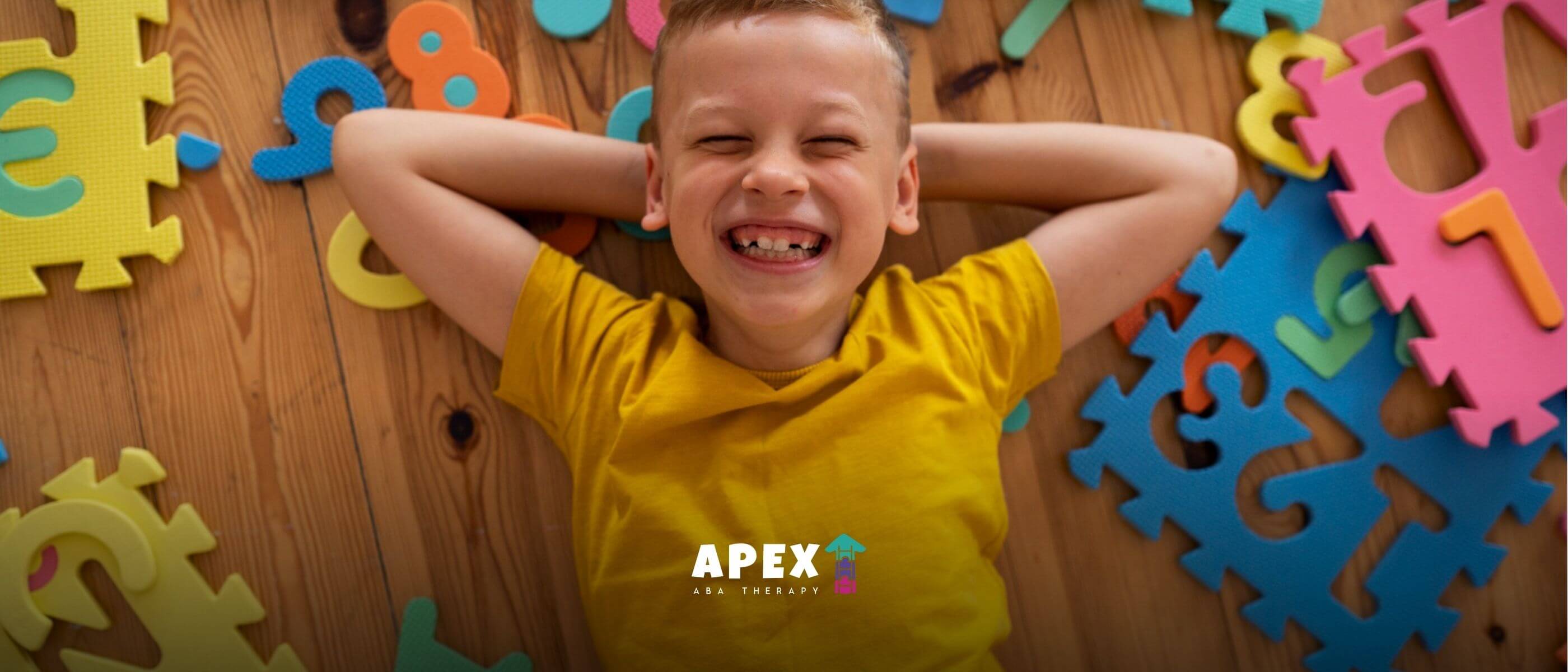Weighted Blankets For Autism
Discover the soothing benefits of weighted blankets for autism. Learn how these comforting blankets can help ease sensory sensitivities and anxiety, promoting better sleep and relaxation for individuals on the autism spectrum.

Weighted Blankets For Autism
Understanding Autism and Sensory Processing
To fully grasp the significance of weighted blankets for individuals with autism, it's essential to first understand what autism is and the sensory processing challenges that individuals with autism face.

What is Autism?
Autism, also known as Autism Spectrum Disorder (ASD), is a developmental disorder that affects individuals in various ways. It is characterized by difficulties in social interaction, communication, and repetitive behaviors. Autism is a spectrum disorder, meaning that it can manifest in a wide range of symptoms and severity levels.
Individuals with autism often experience differences in how they perceive and process sensory information from their environment. This can include hypersensitivity (over-responsiveness) or hyposensitivity (under-responsiveness) to sensory stimuli such as sound, touch, taste, smell, and visual input. These differences in sensory processing can significantly impact their daily lives and overall well-being.

Sensory Processing Challenges in Autism
Sensory processing challenges are common among individuals with autism. They may have difficulties filtering or integrating sensory information, leading to sensory overload or sensory-seeking behaviors. Here are some examples of the sensory processing challenges individuals with autism may experience:
- Auditory sensitivity: Some individuals with autism may have heightened sensitivity to sounds, finding certain noises overwhelming or painful.
- Tactile sensitivity: Sensitivity to touch and texture is another common challenge. Some individuals may feel discomfort or aversion to certain fabrics, tags, or even light touch.
- Visual sensitivity: Bright lights, busy visual patterns, or specific colors may be overwhelming for individuals with autism.
- Gustatory and olfactory sensitivity: Individuals may have strong reactions to certain tastes or smells, which can impact their eating habits and daily routines.
These sensory processing challenges can be distressing and affect an individual's ability to engage in daily activities. Weighted blankets have emerged as a potential tool to help address these challenges and provide comfort and support.
By understanding the unique sensory processing challenges faced by individuals with autism, we can better appreciate the potential impact that weighted blankets can have on their well-being and quality of life.
Introducing Weighted Blankets
Weighted blankets have gained recognition for their potential to provide comfort and relief to individuals with autism. These specialized blankets have been found to have a positive impact on sensory processing and can help promote relaxation. In this section, we will explore what weighted blankets are and how they work.
What are Weighted Blankets?
Weighted blankets, also known as sensory blankets or calming blankets, are blankets that are filled with small, evenly distributed weights, such as plastic pellets or glass beads. The weights are sewn into the blanket's fabric, providing gentle, evenly distributed pressure across the body when the blanket is used.
Weighted blankets come in various sizes and weights to accommodate different individuals and preferences. The weight of the blanket is typically determined based on a person's body weight. It is generally recommended that the blanket weighs around 10% of the individual's body weight, although this may vary depending on personal preference and consultation with a healthcare professional or therapist.
How Do Weighted Blankets Work?
Weighted blankets work based on a therapeutic technique called deep pressure stimulation. Deep pressure stimulation involves the application of firm, gentle pressure to the body, which can have a calming effect on the nervous system.
When a person with autism uses a weighted blanket, the pressure from the weights stimulates the release of neurotransmitters like serotonin and dopamine, which are associated with feelings of relaxation and well-being. This can help regulate sensory processing and promote a sense of calmness.
Weighted blankets can also help reduce anxiety and stress by triggering the body's natural relaxation response. The pressure applied by the blanket can promote the production of oxytocin, a hormone that promotes feelings of calm and reduces anxiety.
Weighted blankets should be used under the guidance of a healthcare professional or therapist, as they may not be suitable for everyone. They should be used in a safe and supervised manner, especially for individuals who may have difficulty removing the blanket independently.
In the next section, we will explore the specific benefits of weighted blankets for individuals with autism, including their role in regulating sensory input and promoting better sleep quality.
Benefits of Weighted Blankets for Autism
Weighted blankets have gained recognition for their unique ability to provide a range of benefits for individuals with autism. By offering deep pressure stimulation, these blankets can help regulate sensory input, promote calming and anxiety reduction, and improve sleep quality. Let's explore these benefits in more detail:
Regulation of Sensory Input
One of the core challenges individuals with autism face is sensory processing difficulties. They may experience hypersensitivity or hyposensitivity to sensory stimuli, leading to sensory overload or seeking sensory stimulation. Weighted blankets can play a crucial role in regulating sensory input by providing deep pressure stimulation.
The gentle, evenly distributed weight of the blanket can help individuals with autism feel grounded, enhancing their ability to process sensory information in a more organized manner. By creating a comforting cocoon-like effect, the weighted blanket can promote a sense of security and stability.
Calming and Anxiety Reduction
Anxiety is a common experience for many individuals with autism. The pressure applied by a weighted blanket can have a calming effect on the nervous system, promoting relaxation and reducing anxiety. The deep pressure stimulation triggers the release of neurotransmitters like serotonin and dopamine, which are known to contribute to feelings of well-being and relaxation.
This can be particularly beneficial during times of heightened stress or sensory overload. By providing a safe and soothing environment, weighted blankets can help individuals with autism manage their anxiety levels and find comfort in moments of distress.
Improved Sleep Quality
Sleep disturbances are prevalent among individuals with autism, affecting both children and adults. Weighted blankets have shown promise in improving sleep quality by promoting a sense of security and relaxation. The gentle pressure provided by the blanket can help calm the sensory system, allowing individuals with autism to transition into a more restful state.
Additionally, the release of serotonin and melatonin associated with deep pressure stimulation can support the natural sleep-wake cycle. Improved sleep quality can have a positive impact on overall well-being, mood, and daily functioning.
Weighted blankets are not only beneficial for individuals with autism but also for those with sensory processing disorder and other related conditions. The advantages of these blankets extend beyond their therapeutic effects and can enhance the overall quality of life for individuals with autism.
To ensure the optimal benefits from a weighted blanket, it is important to select the appropriate weight and size based on individual preferences and needs. Consider consulting with a healthcare professional or occupational therapist experienced in working with individuals with autism to determine the most suitable weighted blanket.
Remember, while weighted blankets can offer significant benefits, they are just one tool in a comprehensive approach to supporting individuals with autism. It is important to consider a holistic approach that includes other therapies, interventions, and accommodations tailored to the unique needs of each individual.
Choosing the Right Weighted Blanket
When it comes to selecting a weighted blanket for individuals with autism, certain considerations should be taken into account to ensure the best possible sensory experience. Two important factors to consider are weight and size and fabric and texture choices.
Weight and Size Considerations
Weighted blankets come in various sizes and weights, and choosing the right one is crucial for optimal comfort and effectiveness. The general guideline for selecting the appropriate weight is to choose a blanket that is about 10% of the individual's body weight. However, this guideline may vary depending on the individual's sensory preferences and comfort level.
Here is a table that provides a general weight range based on body weight:
These are general recommendations, and it's advisable to consult with an occupational therapist or healthcare professional who can provide personalized guidance based on the specific needs of the individual.
In addition to weight, the size of the weighted blanket should also be taken into consideration. The blanket should be large enough to cover the body comfortably, allowing for freedom of movement while still providing a sense of security.
Fabric and Texture Choices
The choice of fabric and texture is another important aspect to consider when selecting a weighted blanket for individuals with autism. The goal is to find materials that are soft and soothing to the touch, promoting a calming sensory experience.
Some individuals with autism may have specific sensory preferences, such as a preference for certain textures or a sensitivity to certain fabrics. It's important to take these preferences into account when choosing a weighted blanket. Fabrics such as cotton, flannel, or minky are often popular choices due to their softness and comfort.
It's also worth considering the breathability of the fabric to ensure that the individual does not become too hot or uncomfortable while using the weighted blanket. Opting for fabrics that allow for proper airflow can help regulate body temperature and prevent overheating.
By considering the weight and size of the blanket as well as the fabric and texture choices, you can select a weighted blanket that caters to the specific sensory needs and preferences of individuals with autism. Remember to consult with professionals and involve the individual in the decision-making process to ensure the best possible experience.
Using Weighted Blankets Effectively
To fully harness the benefits of weighted blankets for individuals with autism, it's important to understand how to use them effectively. This section will explore three key considerations: creating a comfortable environment, incorporating weighted blankets into the daily routine, and safety considerations.
Creating a Comfortable Environment
Before introducing a weighted blanket, it's essential to create a comfortable environment that promotes relaxation and sensory regulation. Here are some tips to consider:
- Noise Reduction: Minimize background noise by using sound machines or soft music to create a calming atmosphere.
- Lighting: Opt for soft, dim lighting to create a soothing environment. Avoid bright or flickering lights, which can be overstimulating.
- Temperature: Ensure the room is at a comfortable temperature, neither too hot nor too cold, to promote relaxation.
- Clutter-Free Space: Clear the area of excessive clutter to minimize distractions and create a peaceful atmosphere.
By creating a comfortable environment, individuals with autism can better focus on the benefits of the weighted blanket.
Incorporating Weighted Blankets into Daily Routine
To maximize the benefits of weighted blankets, it's helpful to incorporate their use into the daily routine. Here are some suggestions for integration:
- Bedtime Routine: Use the weighted blanket as part of the bedtime routine to promote relaxation and improve sleep quality. Incorporate it alongside other calming activities such as reading or listening to soft music.
- Quiet Time: Encourage the use of the weighted blanket during designated quiet time periods throughout the day. This can be a time for relaxation, self-reflection, or engaging in calming activities.
- Transition Support: For individuals who struggle with transitions, using a weighted blanket can provide a sense of comfort and stability during these periods. Consider incorporating it during times of change, such as transitioning from school to home or during travel.
By incorporating weighted blankets into the daily routine, individuals with autism can experience the benefits consistently throughout the day.
Safety Considerations
While weighted blankets can be highly beneficial, it's important to prioritize safety during their use. Here are some safety considerations to keep in mind:
- Supervision: Ensure the individual using the weighted blanket is supervised, especially for those who may have difficulty removing the blanket independently.
- Weight and Size: Select a weighted blanket that is appropriate for the individual's size and weight. It's important to follow the manufacturer's guidelines to ensure the proper weight distribution.
- Comfortable Positioning: Make sure the individual is positioned comfortably under the weighted blanket, allowing for freedom of movement and proper circulation.
- Temperature Regulation: Be mindful of temperature regulation to prevent overheating. If the individual becomes too warm, adjust the room temperature or use a lighter-weighted blanket.
By considering safety precautions, individuals with autism can safely enjoy the benefits of weighted blankets.
Understanding how to effectively use weighted blankets can enhance the sensory experience for individuals with autism. By creating a comfortable environment, incorporating the use of weighted blankets into the daily routine, and prioritizing safety, caregivers can provide a supportive and calming experience for individuals with autism.
Summary
Weighted blankets for autism offer comfort and support for individuals on the autism spectrum. These specially designed blankets provide deep touch pressure, which can help soothe sensory sensitivities and anxiety often associated with autism. Many people with autism find them calming and conducive to better sleep. While weighted blankets are not a cure for autism, they can be a valuable tool to improve relaxation and overall well-being for those living with the condition.
Sources
Frequently Asked Questions

How to Teach Kitchen Safety to Autistic Children: A Parent’s Guide
Teaching kitchen safety to autistic children is easier with the right strategies. Learn step-by-step tips to create a safe environment and build essential skills.

How to Manage Attention-Seeking Behaviors in a Positive, Supportive Wayr
Learn how to reduce attention-seeking behaviors in children using positive reinforcement, clear boundaries, and communication skills. Find helpful strategies here.

Can Play Therapy and ABA Therapy Work Together to Help Your Child?
Combining play therapy with ABA therapy offers a powerful way to enhance your child’s growth. Find out how these therapies work together for lasting benefits.



